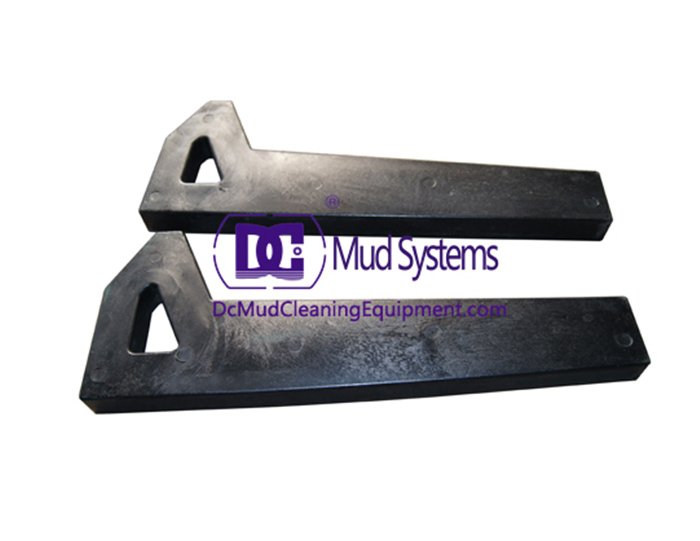Mud systems play a crucial role in the efficiency of drilling operations, serving multiple functions that enhance performance, safety, and cost-effectiveness. These systems, often referred to as drilling fluid systems, are integral to the success of drilling projects across various industries, including oil and gas, mining, and geothermal energy. This article explores how mud systems contribute to drilling efficiency and the various factors that influence their effectiveness.
Understanding Mud Systems
At their core, mud cube system consist of drilling fluids designed to facilitate the drilling process. These fluids, commonly known as drilling muds, serve several critical functions, including cooling and lubricating the drill bit, carrying rock cuttings to the surface, and stabilizing the borehole walls. The composition of these drilling fluids can vary significantly, depending on the specific requirements of the drilling operation and the geological conditions encountered.
Drilling muds can be broadly categorized into water-based, oil-based, and synthetic fluids, each with its unique properties and advantages. Water-based muds are commonly used for their cost-effectiveness and environmental friendliness, while oil-based muds are favored for their superior lubrication and stability in challenging conditions. Synthetic fluids combine the benefits of both, offering enhanced performance while minimizing environmental impact.
H2:Enhancing Drilling Performance With Mud Systems
The efficiency of a drilling operation is heavily influenced by the choice of mud cooler system. Effective mud systems can significantly enhance drilling performance by optimizing several key factors. For instance, the viscosity of the drilling fluid affects the rate of penetration (ROP) and the overall speed of the drilling process. A well-formulated mud system can minimize friction between the drill bit and the rock formation, allowing for faster penetration rates and reduced wear on drilling equipment.
Additionally, mud systems help manage the pressure in the wellbore. Properly balanced mud weight ensures that hydrostatic pressure counteracts formation pressure, reducing the risk of wellbore instability and blowouts. This stability allows drilling to proceed more smoothly and reduces the need for costly remedial operations.
Managing Cuttings and Wellbore Stability With Mud Systems
One of the primary roles of mud systems is to transport cuttings generated during the drilling process. An efficient mud system carries these cuttings to the surface, preventing them from settling in the borehole and potentially causing blockages. This effective removal of cuttings is essential for maintaining drilling efficiency, as accumulated cuttings can lead to increased friction and decreased penetration rates.
Moreover, mud systems play a vital role in maintaining wellbore stability. By providing necessary support to the borehole walls, drilling fluids help prevent collapses and other stability issues. The use of specific additives can enhance the mud's ability to stabilize the borehole, allowing for longer intervals between casing runs and reducing operational costs.
Reducing Environmental Impact With Mud Systems
As environmental concerns grow, the role of mud systems in minimizing ecological impact has become increasingly important. Advances in mud technology have led to the development of more environmentally friendly drilling fluids, which reduce the risk of contamination to surrounding land and water sources. Water-based muds, for instance, can be formulated to be biodegradable and non-toxic, making them suitable for use in sensitive environments.
Implementing effective waste management practices within mud systems also contributes to environmental efficiency. Closed-loop systems allow for the recycling of drilling fluids, minimizing waste and reducing the demand for fresh water. This not only supports sustainability efforts but also lowers operational costs by maximizing the use of existing resources.
Innovations Driving Efficiency About Mud Systems
The evolution of mud systems is marked by ongoing innovations aimed at enhancing drilling efficiency. Advanced monitoring technologies are increasingly integrated into mud systems, allowing for real-time data collection on fluid properties, flow rates, and pressure levels. These monitoring systems enable operators to make informed decisions and adjustments, ensuring optimal performance throughout the drilling process.
Furthermore, the development of smart drilling fluids, which can change properties based on downhole conditions, represents a significant advancement. These adaptive fluids can enhance performance under varying geological conditions, providing flexibility and improving overall efficiency.
Training and Best Practices About Mud Systems
While technology plays a vital role in the effectiveness of mud systems, the knowledge and skills of the personnel involved in drilling operations are equally important. Proper training on mud properties, mixing procedures, and monitoring techniques ensures that operators can optimize the performance of mud systems effectively. Best practices in mud management, including regular testing and adjustments, are essential for maintaining drilling efficiency and safety.
 Linear Motion Shale Shaker In Drilling Rig
Linear Motion Shale Shaker In Drilling Rig  Oilfield Mud Cleaner
Oilfield Mud Cleaner  Drilling Fluid Decanter Centrifuge
Drilling Fluid Decanter Centrifuge Drilling Mud Desander
Hydrocyclone Desilter
Centrifugal Pump/Centrifugal Mud Pump
Shear Pump
Jet Mud Mixer
Horizontal Mud Agitator
Constant Pressure Drilling Fluid Mud Gas Separator
Mud Gun
 Mud Tank
Mud Tank Solids Control System Vacuum Degasser
 Flare Ignition Device
Flare Ignition Device  Diesel Tank
Diesel Tank  Submersible Slurry Pump
Submersible Slurry Pump 



































